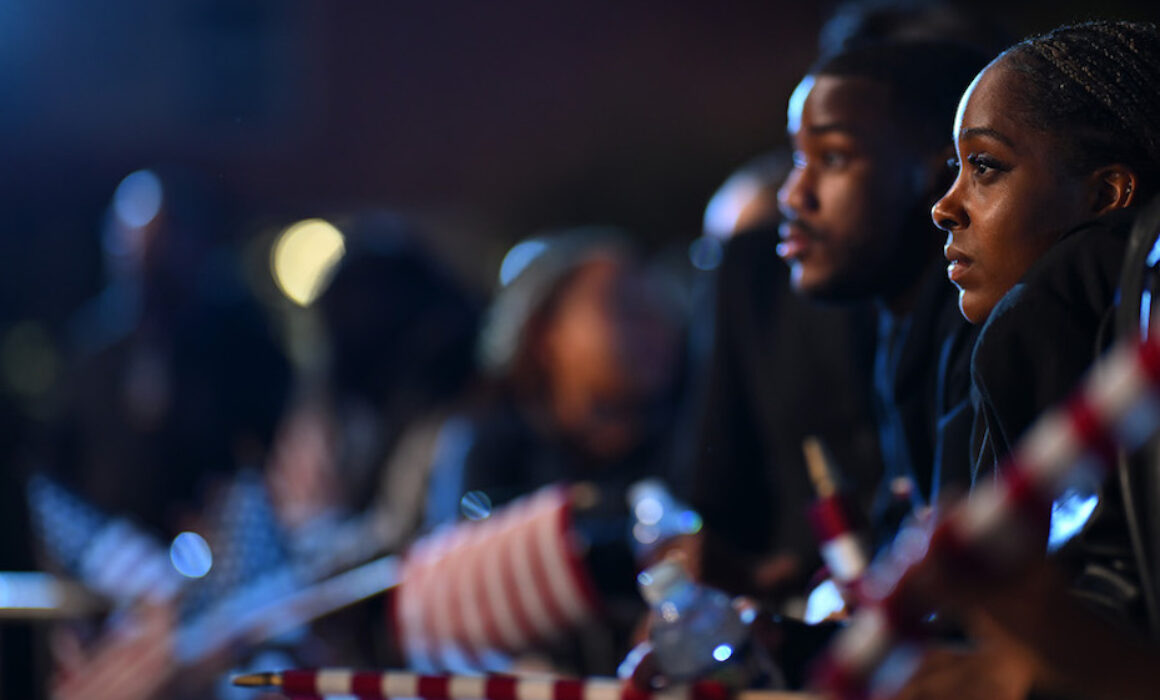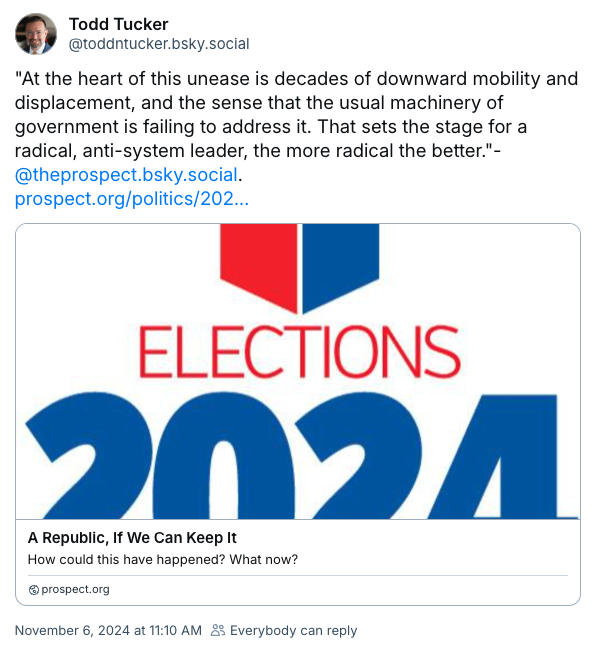We Are All Post-Neoliberals Now
November 8, 2024
How did we get here, and how do we move forward?
The Roosevelt Rundown features our top stories of the week.

Supporters watch results come in during an election night watch party for Kamala Harris at Howard University on November 5, 2024, in Washington, DC. (Brandon Bell/Getty Images)
The Other Side of Election Day
The nation awoke Wednesday morning to a new political landscape—one that could portend darker and more illiberal days to come. But as Roosevelt President and CEO Felicia Wong reminds us, “The long arc of political time cannot be conceived of, or won, in two- or four-year increments.”
In a blog post written the weekend before the election, Wong examines how we got here. As historian Gary Gerstle outlined on Ezra Klein’s podcast, the neoliberal order that dominated policymaking from the Ronald Reagan era to the Great Recession gave way over the past 15 years to a new consensus on both the Left and Right: Unfettered markets cannot solve all our problems.
“The old order broke because it failed to keep its most important promise: that a rising tide lifts all, or even most, boats,” Wong writes. “At the most basic level, a successful and enduring political system must be able to provide for its people.”
Over the past four years, as Nicholas Lemann recounts in the New Yorker, this new economic thinking led to a remarkable shift in policymaking, with government taking a more active role in shaping markets and rebalancing power. Even Vice President–elect JD Vance has touted a more assertive federal approach to driving strategic industries.
“Neoliberal practices and beliefs cast a long shadow, but in some meaningful sense we are all post-neoliberals now,” Wong writes. “Now, we must continue to push toward an economy that addresses our most gutting inequalities in ways that are better, and not worse, than what came before.”
Read more in “The Other Side of Tuesday: A Long View of this Political Moment.” And watch this space for more on the policy fights ahead—from the upcoming expiration of Tax Cuts and Jobs Act provisions to the ongoing implementation of the Inflation Reduction Act.
What We’re Talking About
What We’re Reading
Get Ready for Inflation and Interest Rates to Rise Again – feat. Roosevelt Chief Economist Joseph Stiglitz – Business Insider
What a Trump Presidency Means for the 2025 Tax Fight, Explained – Bloomberg Law
The Solution to Automation Fears: Employee Ownership – The Hill
Three States Had Paid Leave on the Ballot. Voters Overwhelmingly Approved All of Them. – 19th News
